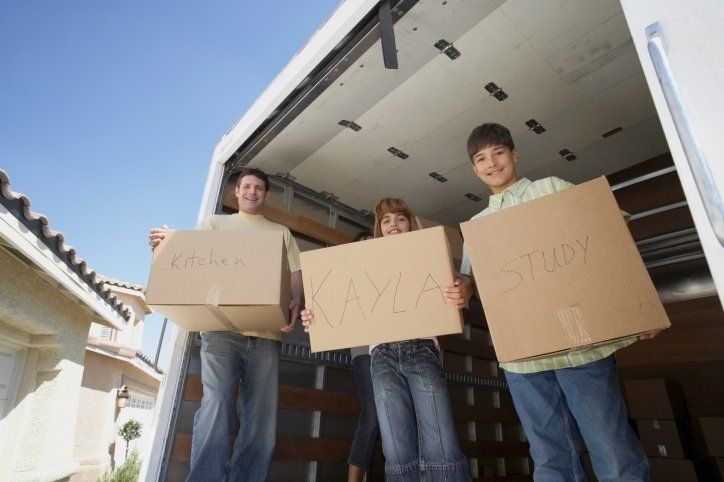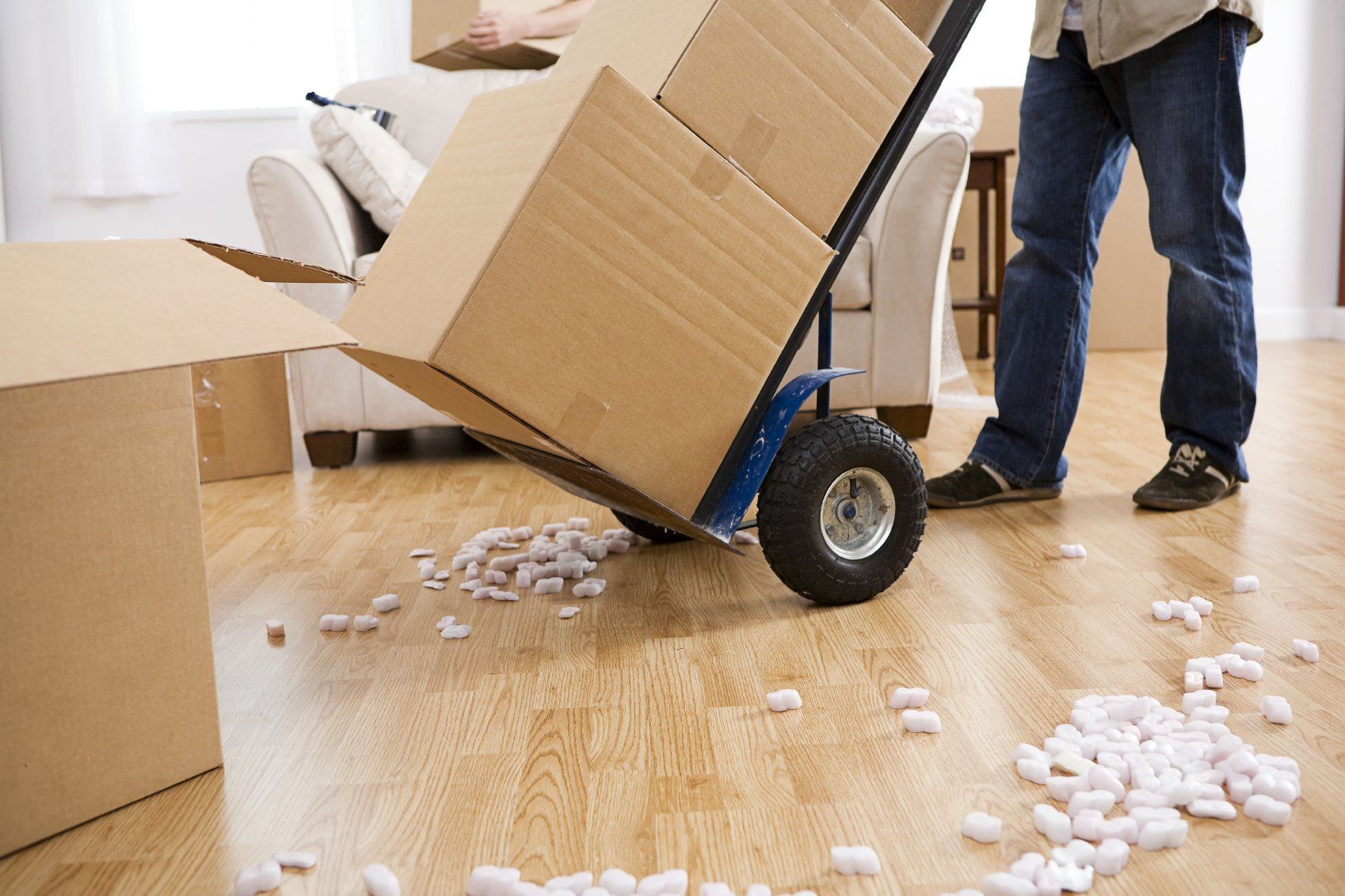9 Ways to Downsize Before Moving
How to Make Moving into a Smaller Space Easy as Possible
You’re finally ready to move on to the next chapter of your life. Congratulations! Along with this well-earned breath of fresh air come a few things to consider, especially when you’re about to move into a smaller home. One of the best things about downsizing is that you get to customize the new space to your specifications.
It’s easy to become overwhelmed at first. Moving is one of the most emotionally draining and stressful events in life, with some people even likening the process to grieving. We highly suggest taking a deep breath. Allow yourself some time to embrace the change!
You’re free to choose how you want to move forward in the downsizing process, and that’s a powerful thing to have at your disposal. When you’re ready, we’re here to help. For now, here are some downsizing tips!
9 Ways to Downsize Before the Big Move
1. Plan ahead.
Before getting started, give yourself at least three months. While this seems like a bit much, having plenty of time before beginning your downsizing journey will allow you to approach the process at your leisure with a clear head. During this time, try to pinpoint why you’re downsizing in the first place and focus on that. No idea where to begin? Start here:
- Less space will give you less to maintain in your home at the end of the day.
- Less maintenance means more time spent doing things you enjoy (sometimes one of those things can involve doing absolutely nothing, which– let’s face it– can be incredibly cathartic in and of itself)!
- With less living space, you’ll be able to travel more, read more books, enjoy friends and family, or get more sleep! The possibilities are endless.
2. Do one thing at a time.
When dealing with daunting tasks, the best advice we have is to take one small step after the other. You have likely lived in your current home for many years, collecting not only memories but family heirlooms that hold significant sentimental value. Take each item and allow yourself to reminisce. Does it still bring you happiness? Keep it! If not, someone else may find joy in it, so toss it in a donation box.
Are you thinking about passing down sentimental items like jewelry, books, framed photographs, and other memorabilia to loved ones? Then it’s a good idea to categorize them now and set them aside in labeled boxes so that they won’t spend time collecting dust after you move into your new home.
3. Discover your entrepreneurial spirit.
Use three months of prep time to get a head start! Gather items that are still good but no longer belong in your immediate future and start pricing them for a yard sale (start higher than you’d think– people tend to haggle prices down even if they’re already inexpensive).
Research when your city-wide garage sale takes place and participate in that, or take photos of leftover knick knacks, post them on online in places like Craigslist, and watch as the offers trickle in. Have a little patience with this process — there will be a lot of back-and-forth communication between you and folks bidding to purchase your items.
Keep in mind that you can also use Facebook Marketplace to give items away for free in “buy nothing” groups. People in need truly appreciate when you give away items in good condition in these groups.
4. Get help from friends and family.
Don’t think that you have to go it alone! Recruit family and friends to help sort items into “Keep,” “Donate,” “Sell,” and “Trash” piles. Bribe them with lunch or dinner! While everyone is over could also be an opportune time to distribute your heirlooms and things you want to pass along.
5. One man’s trash is another man’s treasure.
Once your donation boxes and bags start to fill up, take them directly to your car so that you can drive them to a consignment store or Goodwill as soon as possible. Don’t pile them in the garage to deal with later!
Relish the thought of giving back to the community. You’ll feel so much better about the clutter that’s magically gone after having dropped off your donatable goods. So much more room for activities!
6. Eliminate the unnecessary.
One of the most challenging ideas to become at peace with is throwing things away. You have to convince yourself that it truly is okay to toss something in the garbage, especially if it no longer has a place in the life you see yourself living in your new home. It’s okay to let go, we promise.
- Tip: If you absolutely can’t let go of something, then consider renting a storage space or handing a belonging to a loved one. Someone you know may need an extra couch in their living room, or they may have free storage solutions in their garage or shed.
7. Get rid of the gray area.
As decluttering goes, you may have to be a little more callous when it comes to separating items into categories. We suggest only having “yes” or “no” piles and no “maybe”. Getting rid of things you’re on the fence about will be one less pile to consider, and your task will be that much quicker to accomplish. For example, if you have duplicates of items, that’s an easy “no” that you can toss into the donate bin.
8. Give yourself some grace.
At the end of the day, it’s okay to hold on to things as well. You could technically get rid of everything and start from scratch if you really wanted to. Some things can’t be replaced or easily discarded, and it is important to distinguish those from excess. Take a page from Marie Kondo’s book Spark Joy and keep only the things that make your heart the happiest. Good luck!
9. Stuck? Hire a professional organizer.
To make sure you don’t have excess belongings after unpacking into your new home, you can hire a professional organizer. These pros can help you downsize to the right number of belongings so that what you have fits in your new house. You’ll have more space and freedom, and perhaps even some wiggle room to get new items that suit your new dwelling.
Source: Marketplace Homes
Dusty Rhodes Properties is the Best Realtor in Myrtle Beach! We do everything in our power to help you find the home of your dreams. With experience, expertise, and passion, we are the perfect partner for you in Myrtle Beach, South Carolina. We love what we do and it shows. With more than 22 years of experience in the field, we know our industry like the back of our hands. There’s no challenge too big or too small, and we dedicate our utmost energy to every project we take on. We search thousands of the active and new listings from Aynor, Carolina Forest, Conway, Garden City Beach, Longs, Loris, Murrells Inlet, Myrtle Beach, North Myrtle Beach, Pawleys Island, and Surfside Beach real estate listings to find the hottest deals just for you!
Share





